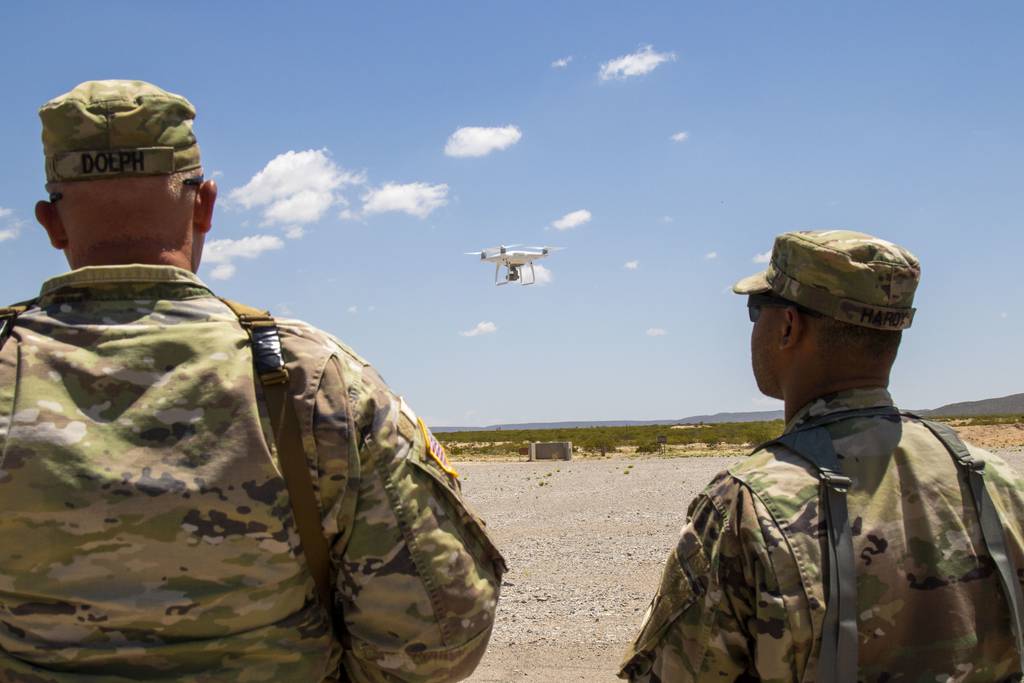WASHINGTON — The U.S. Army’s counter-drone office is recommending three specific companies, should the service choose to invest in defense against UAVs as a service, according to a Sept. 16 memo obtained by Defense News.
Anduril, Black Sage Technologies and SAIC are the businesses recommended by the Joint Counter-small Unmanned Aircraft Systems Office following an April demonstration event out at Yuma Proving Ground, Arizona.
Counter-UAS as a Service, or CaaS, would be a contractor-owned, government-operated capability at fixed locations.
The office received a total of 25 whitepapers for CaaS and selected five to demonstrate their capabilities because they met specific requirements. Those five were Anduril Industries, Black Sage, CACI, Rafael Systems Global Sustainment and SAIC.
The Army is the military branch tasked to lead the office, which was established in late 2019. The office has now conducted three demonstrations — two last year in the spring and fall, and one this spring. The plan is to continue demonstrations twice a year to fix capability gaps identified by the military in countering small UAVs.
“Vendors developed or integrated end-to-end CaaS architectures by teaming with other vendors, participated first in characterization of the subsystems performance, then executed a demonstration of their CaaS System-of-System capabilities in realistic operational environment,” the memo read.
The systems went up against groups 1, 2 and 3 drone threats — a categorization of unmanned systems by weight.
Anduril’s system used radar and electro optical/infrared technology for detection and tracking. It also had an electronic warfare capability. All of this was controlled through its Lattice command-and-control framework, the memo said.
The company’s solution is mature based on ongoing work for the U.S. Marine Corps and U.S. Special Operations Command.
“Anduril used a combination of Anvil AUAS and Pulsar EW/[positioning, navigation and timing] effects to successfully mitigate incoming threats,” the memo noted. “They provided a turnkey solution with lessons learned from USMC and SOCOM for rapid operational capability.”
Additionally, Anduril’s solution “demonstrated a low false detection rate,” the document read.
Black Sage’s architecture consists of multiple radars, radio-frequency detection and defeat, PNT jammer, and protocol attack “all controlled through their Defense OS C2,” according to the memo.
The original plan included a high-energy laser, but “availability issues” prevented that, the memo added.
Black Sage’s offering was “very effective,” the memo stated. The system’s Goshawk PNT jammer “is a very powerful broadband jammer that demonstrated the ability to mitigate all autonomous threats, some of which were likely defeated at ranges before some sensors detected them.”
Additionally, the system had a low false detection rate, the memo noted.
Lastly, SAIC “developed and demonstrated a robust SoS architecture, with layered sensors and effectors to cover long range to mobile to last-line-of defense short-range,” the document stated.
The system included the RPS-42 and Spyglass radars cued to electro-optical/infrared camera systems and DroneSentry, EnforceAir and RfOne MkII for radio-frequency detection, the memo added.
“All sensors and effectors were integrated into their Valkryie C2 system,” it noted.
EnforceAir and AeroGuard “demonstrated impressive effectors,” according to the document. EnforceAir was able to “force-land” the Phantom 4 Pro V2 and Opterra Dragonlink. Furthermore, it added, AeroGuard chased down threat aircraft and deployed a net to capture the threat.
The memo contains the disclaimer that — while the Joint Counter-small Unmanned Aircraft Systems Office recommends the service consider the three companies — the document “is not intended to be a requirement to award these vendors.”
SAIC sees its solution as unique because “we didn’t build a thing, we built an integration capability where you can take many things and you can control many things at one time,” Bob Genter, the company’s defense and civilian business president, told Defense News in an interview ahead of the Association of the U.S. Army’s annual conference.
“It depends on what you’re trying to do,” Genter said. “It brings in radar systems and cameras and drones to be able to go out and actually capture other drones [with a net].”
The system also has the ability to neutralize threats using a high-power microwave capability.
Capabilities can be swapped depending on a customer’s needs. SAIC can work with any possible sensors or non-kinetic or kinetic solutions, according to Genter.
“All of those things are controlled by one single pane of glass where you have an operator that can click on whatever tool they need to use.”
Jen Judson is an award-winning journalist covering land warfare for Defense News. She has also worked for Politico and Inside Defense. She holds a Master of Science degree in journalism from Boston University and a Bachelor of Arts degree from Kenyon College.








